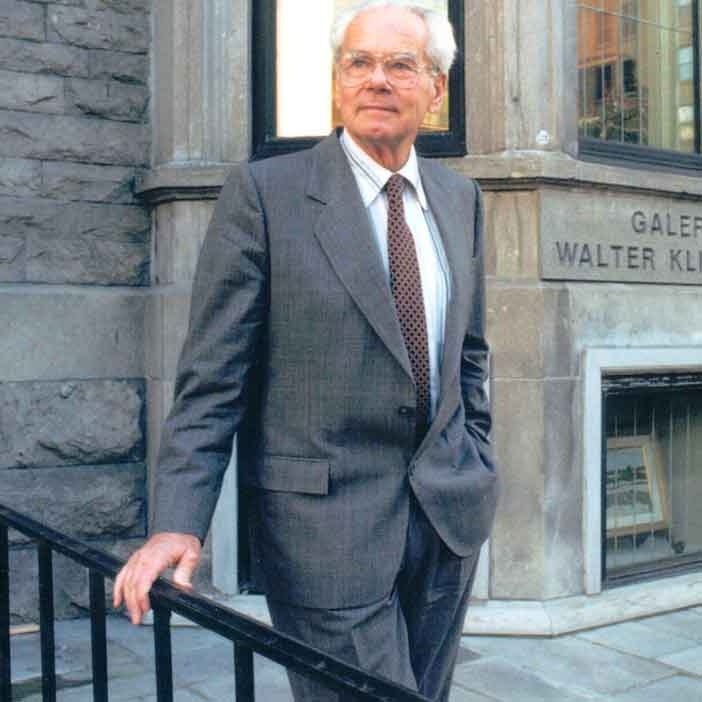Remembering Arthur Lismer
Arthur Lismer was a world-renowned authority on children's art as well as a great teacher. He was a superb and very original artist and had been one of the founding members of Canada's foremost art movement, the Group of Seven. Dr. Lismer's office was at the Art Centre of the Montreal Museum, where he was the director of the school of art. There, I visited him frequently, particularly after his summer vacations in a cottage by an isolated beach on Vancouver Island, probably near Lismer Bay, named after him. He never revealed the exact location so as to ensure his privacy. I was a frequent caller at his office in the museum. He brought to his office there some of his most recent work, sometimes also quite large canvases, which he had painted from his sketches either during the summer on rainy days or even at home after his return. Although he took art very seriously, he only joked and belittled his own work. If a mother of one of his pupils admired something, he would say: "there must be something wrong with your eyesight but if you really like it, take it." Whether they really liked it or not, most people took it, knowing about Lismer's fame, then they often brought it to my gallery to ask what I thought of it and left the sketch or drawing for framing.
It was never easy to buy any work from Arthur Lismer. He sometimes expressed the opinion that since he does not have to make his living by painting, he did not want to compete with artists who did and were having a hard time. Nevertheless, when I succeeded in putting a group of paintings together, I had to ask him the price. This was always difficult to determine and he often asked me to take the paintings and he would let me know within a few days. As I could not do anything with the paintings until I had prices, I was anxious to know, and when I did not hear from Dr. Lismer for a week I telephoned. He would usually ask me what I had taken, he could not recall I had taken any. I found that sometimes so implausible, I would wonder if he was putting on a bit of an act. Finally, I had to come over to his office once more, he would name the price, always quite modest and that was the end of it until next time. A good friend of mine and art collector also got to know Dr. Lismer well and had bought some paintings in his office. He always wanted to visit Dr. Lismer at home, partly, no doubt, to see what he had there. I told him that I had never been invited there and had never known anyone who had visited the Lismers. They had both been born in England and their home was their castle. They wanted no intrusion. My friend, a business executive who had been calling Dr. Lismer "Arthur" for a long time, once rang his bell on Fort Street. Dr. Lismer answered the door, stood in the doorway, said a few words and shut the door. The message was clear.
The large early canvas, Cathedral Mountain, had been in storage at the Montreal Museum of Fine Arts for over twenty years. It was too big for him to store in his own basement and he had no other place for it. On one of his periodic visits with Lismer, my Toronto colleague, Blair Laing, bought the canvas and had it shipped to Toronto. Not many months after, the Montreal Museum purchased the picture. Dr. Lismer was pleased but surprised. He told me that had anyone from the Museum expressed interest in owning the picture, he would have gladly given it as a gift.
When Lismer died, things were removed from a storage room in the basement, including some furniture, which had been there for 25 years, ever since the Lismers arrived in Montreal from Toronto. In one of the chests a number of marvelous early sketches were found and also a superb Tom Thomson. To my surprise and relief, his widow had been left quite comfortably well off. The Lismers had always lived frugally, they never owned a car, he had always worked and painted and even though totally disinterested in money, his widow was left financially secure. The newly discovered sketches, many drawings and the Thomson were given to us for sale. The proceeds of the sale of the Thomson were to be given to the Montreal Museum of Fine Arts for the establishment of a Lismer Scholarship. This was an act of matchless generosity. Unfortunately, the Art Centre was discontinued soon after Lismer's death and I have never heard of the Lismer Scholarship having been awarded. The funds were probably put in one of the general or acquisition funds. Even so, Lismer, by his work established his own monument and can never be forgotten.
Source: Reminiscences of an Art Dealer, Walter H. Klinkhoff, Private Publication, Limited Edition, 1993.
© Copyright Galerie Walter Klinkhoff Inc.




